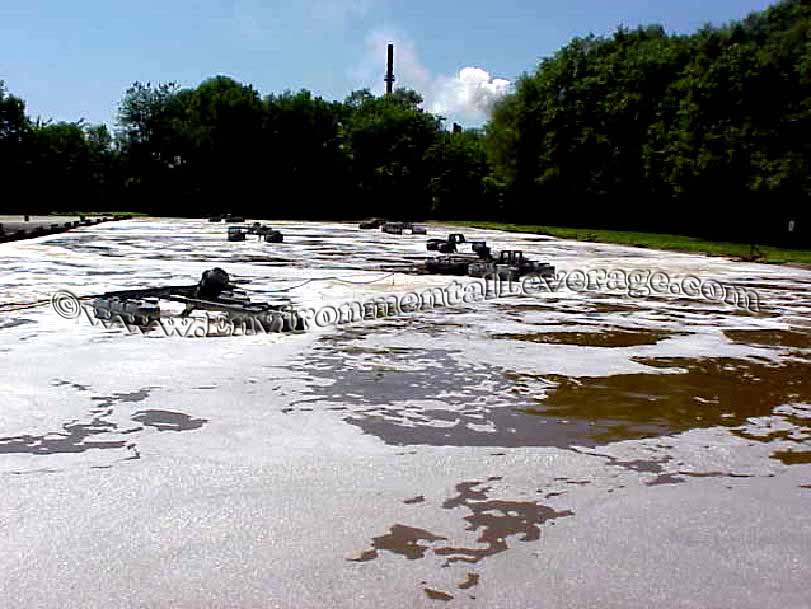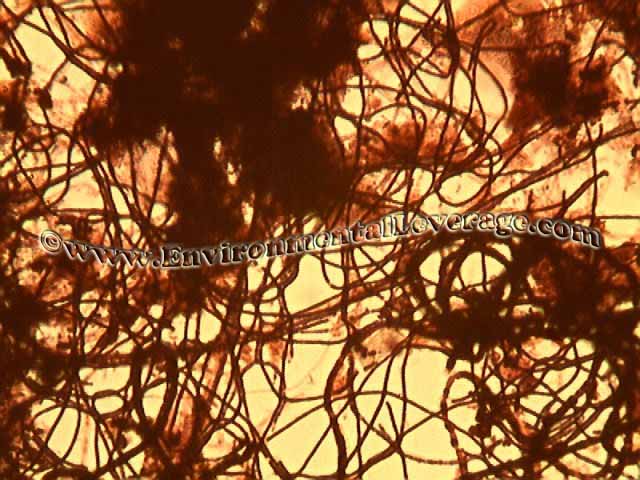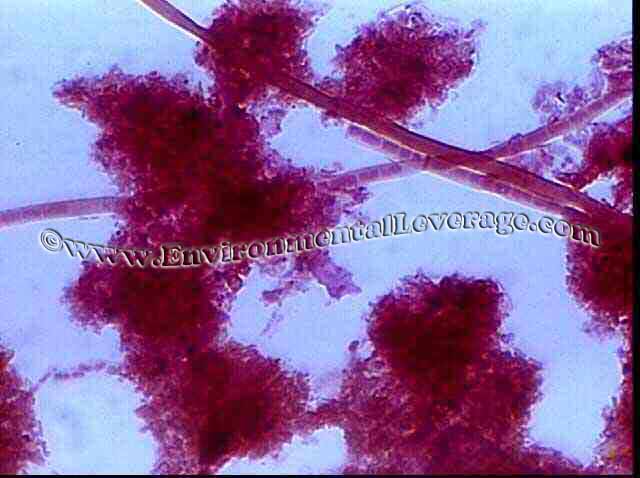Biological Products:
Bioaugmentation products for Wastewater applications in Papermills, Refineries, Chemical, Tanneries, Municipalities, Textiles, Steel, Agriculture, Animal feedlot, Gun Powder plant, Food and Beverage- Dairy Products, Orange Juice factory, Wineries, Cookie factory, Vegetable processing plant, Meat packing, Barbecue Restaurant, Aquaculture, Ornamental Ponds for algae control, CAFO, Nursing homes, Military, Campgrounds, Universities, Regulatory agencies
Lab Services:
Filamentous Identification Lab Service. One reason to identify filaments is to determine the filaments characteristics and then determine the type present. If the type is found out, a root cause can usually be associated with a particular filament. If the cause is known, then a correction can be made to alleviate problems. Chlorination is only a quick fix. Without process changes, filaments will grow back after chlorination. Wastewater Biomass Analyses and Cooling Tower Analyses also available
Training Materials:
Training is an integral part of any job. Not everyone is at the same level of training. Many people want beginning concepts and basics. Some need technical information or troubleshooting. Some want equipment, technology or process information. We have developed a full set of Basic training, Advanced training, Filamentous Identification the Easy Way as well as custom training CD's Manuals. We also provide hands-on training classes and soon will have an Online "E-University".
Audits and Consulting:
At Environmental Leverage® Inc., we have a team of experienced individuals who come into your plant with a fresh pair of eyes. The system is checked from influent to effluent. System optimization, equipment efficiency and operational excellence are key components explored. Key Benefits Equipment efficiency Total Cost of Operation reductions Reliability and safety An onsite audit is conducted to examine system parameters, process controls, and current monitor and control procedures. A physical walk-through is conducted, process flow diagrams are examined, previous design criteria are examined and current standard operating procedures are evaluated along with data logs.
|
Industry Troubleshooting- Papermill solids handling issuesLatest News!
What's New!
We have just added "Virtual Audits" to our capabilities. Check out our new Services. We are in the process of developing new courses for our ""Online E-University" in order to meet the needs of our global customers that cannot travel to our public classes.Visit our new website www.WastewaterElearning.com/Elearning
Paper mills are notorious for holding solids too long in the system.
Holding times of influent should always be kept to a minimum. Generation of septic conditions can also contribute to ashing in the clarifier, since the solids are turning anaerobic in the bottom of the clarifier and generate gases that cause clumps of solids to float to the top. This increases solids carryover. These conditions usually lead to the growth of excessive levels of filaments later on in the aerobic biological portion of the system.
Sometimes, anaerobic sludge is sent to the primary clarifier via the belt press supernatant. This can also lead to an increase in septic conditions in a primary clarifier, since you are seeding the system with bacteria that like to grow in anaerobic or facultative conditions.
100% recycle mill- floating solids on clarifier Floating islands due to too many solids
Scum build-up in the primary clarifier Frozen scum in centerwell
Tissue mill in Wisconsin, Algae and scum clogging up weirs
Algae build-up in secondary clarifier can cause permit violations on TSS and false BOD readings. Minor maintenance can help reduce algae level build up.
Ashing on clarifier and gassing due to holding solids too long. The bacteria turn anoxic or anaerobic and generate gasses and causing solids to float
Some papermills have activated sludge. Some Have SBR's or lagoons
Some have large equalization tanks. These are notorious for again
holding solids too long, low or no D.O.,
Run-off causes septicity and BOD overload problems, since leachate returns to the front of the system.
Many times the leachate is not checked for BOd loading, excess nutrients or other critical compounds that may impact final effluent permit. Septicity can cause a huge drain on available D.O. levels to the bacteria. See newsletter on septicity.
Some Papermills have large lagoons. Below is an example of a three stage lagoon.
The first stage of the lagoon was aerated, second and third were designed for settling portions of the lagoon. Large amounts of algae, scum and duckweed covered the last two stages of the pond. Many lagoons have large areas for settling. Duckweed can often grow in places where BOD removal is not completed. Solids can build up and dredging may be necessary sooner than design. Dredging lagoons can cost hundreds of thousands of dollars if not millions. Bioaugmentation and control of the "Critical 5" can help reduce dredging and solids handling costs. Some papermills with huge lagoons typically add bioaugmentation to their system in order to treat the changes in loading and BOD fluctuations. MicroClear M100 and MicroSolv 118 can easily help improve your BOD and TSS removal in large ASB or lagoons systems
Some papermills pretreat with Anaerobic digesters or trickling towers. Some have covered systems. Just because you have an anaerobic system does not mean you do not need to check certain critical parameters. Anaerobic digesters still need pH, temperature, some ammonia and phosphorus, alkalinity to acids ratio to be monitored, gas production. Make sure regardless of what type of treatment you have at a papermill, you run the system by checking the critical parameters. Many papermills add MicroClear M100 micronutrients to their digesters.
Believe it or not, some actually have floating DAF's for clarifiers. This is a Saturn DAF clarifier.
Imagine filamentous bacteria vs. floc formers. It is kind of like comparing meatballs to spaghetti. Filaments take up 3-4 times or more the space that floc formers do. Both will degrade BOD, yet one will cost you more in solids handling. By optimizing the "Critical 5" and paying attention to your time and numbers you can promote floc formation instead of filamentous growth.
More to come . . . . .
Contact us to perform a Total
System Audit of your plant or to see examples of previous audits Wastewater in the Fall- Problems and Solutions Pulp and Papermill Case Histories Summer impacts on your plant Hurricane or Severe Weather Upset recovery program Wild Weather Extremes that can impact your plant
More on Papermills: Take a tour of a papermill Solids Holding - Sludge Judge Lagoons-Winter BOD issues and bioaugmentation Learn how Environmental Leverage can help your plant Bioaugmentation in Papermills- impact on BOD and TSS Filamentous bacteria can be a problem is solids are held too long in a
clarifier also.
Total System Optimization- Case History Lab Testing and Troubleshooting Newsletter
Come take a closer look at some Pulp and Papermill Case Histories
More to come . . . . .
|

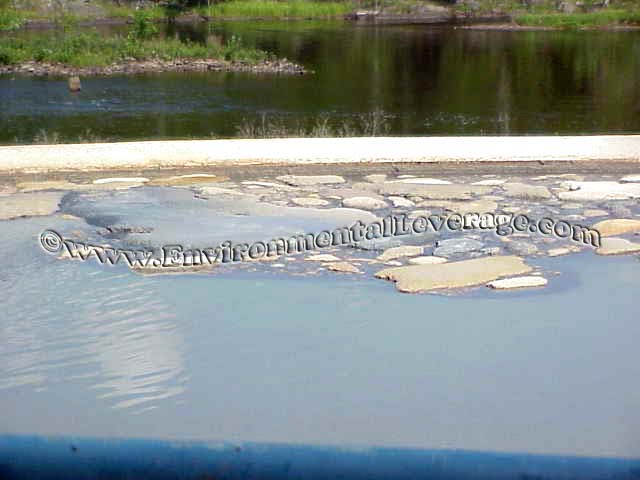
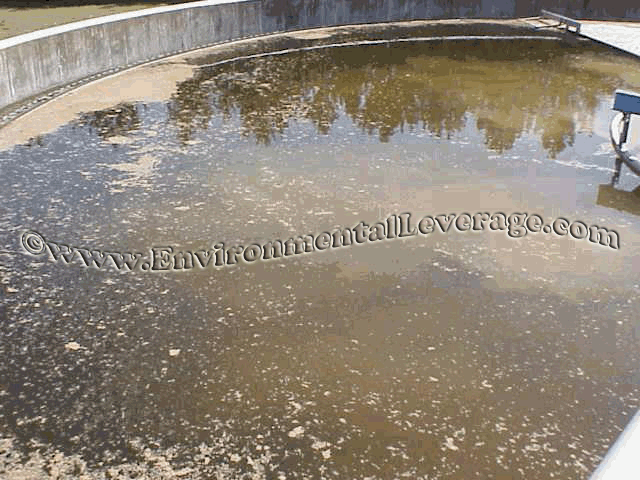

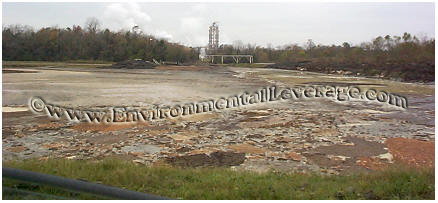 Sludge
Lagoons are another source of solids build-up. On the left is a solids
holding lagoon.
Sludge
Lagoons are another source of solids build-up. On the left is a solids
holding lagoon. 